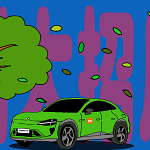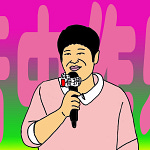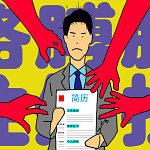Welcome to RealTime Mandarin—a multimedia resource to immerse you in the latest Chinese language trends, inspire you to practice and improve your Mandarin every week, and empower you to communicate with confidence.
Subscribe now to get the next issue straight to your inbox!
Chinese companies produced two thirds of all electric vehicles sold globally in 2022.
Performance, design, and the technologies in Chinese EVs match or exceed cars made anywhere else in the world.
A report published in June looks at what these Chinese automakers can learn from how Japanese car brands went global in the 1970s.
In the century-long history of the automotive industry, the 1920s and 1930s were the golden age of American cars. However, in the 1970s and 1980s, Japan emerged taking centre stage, becoming the choice for global consumers. By examining and analysing the successful journey of Japanese automotive companies, we can predict the future trajectory of China's automotive industry as another latecomer.
在百年汽车工业史上,上世纪二三十年代是美国汽车的黄金时代,到了七八十年代后,后发者日本汽车登上舞台中央,成为全球消费者追捧的对象。通过回顾分析日本汽车的成功之路,或可推演同样作为后发者的中国汽车的未来走向。[2]
New Chinese automotive companies already dominate global EV sales:
China has emerged as the leading global car exporter, overtaking Japan in the first quarter of this year. According to the data, the country's car exports have reached nearly 1.5 million units from January to April. While the dream of expanding overseas began in 2010, the automotive export industry struggled to surpass the one million mark over the past decade, showing limited growth.
However, the start of the 2020s was a turning point. In 2021, there was a remarkable breakthrough as car exports doubled for the first time, exceeding two million units and entering a phase of accelerated growth. The momentum continued in 2022, with exports soaring to an impressive 3.4 million units.
Extrapolating the figures from the first four months of 2023, the annual exports this year could reach an estimated 4.5 to 5 million units.
数据在此,今年一季度,中国超越日本,成为全球第一大汽车出口国,1-4月份,国产车出口已接近150万辆。2010年是出海梦的起点,但后面十多年,我们汽车出口始终在100万左右徘徊,停滞不前。
转折出现在2020s。到了2021年,汽车出口销量翻了一番,首次突破200万辆,并开启加速模式;2022年,这一数据再次跳升到340万辆;如果简单将2023年前4个月的数字年化,今年的出口将达到450-500万辆。[1]
In the 1970s, Japanese companies focussed on the US market. The likes of Honda offered cheaper, smaller, more fuel-efficient cars which at the time were not popular with American consumers, who preferred bigger, higher horsepower gas-guzzlers.
But the energy crises of the 1970’s presented an opportunity for Japanese car brands to offer smaller, cheaper cars, which were also cheaper to run.
The report reckons there are parallels today as Chinese EV brands go global, with the transition to clean energy. But it also suggests these ambitious Chinese companies need a change of mindset, warning intense competition domestically could mean they miss out on the opportunity to dominate globally:
The majority of Chinese car manufacturers remain focused on the domestic market, because the penetration rate of new energy vehicles in China has just surpassed 30%. There is still substantial room for growth in the domestic market over the next three to five years. However, complacency can lead to stagnation and missed opportunities.
但大部分车企的思路仍停留在内卷,毕竟国内的新能源渗透率将将过30%,国内的蛋糕3、5年内还足够吃。但生于忧患死于安乐。[1]
So, that's what we explore this week!
Favourite Five
1. 新势力 xīn shì lì
new forces, emerging companies
国内涌现一大批造车新势力,激烈角逐 - A large number of new companies in car manufacturing have emerged domestically, engaging in intense competition. [1]
2. 弯道超车 wān dào chāo chē
overtake on a bend, to leapfrog
将新玩家——中国汽车推向世界舞台,并成功实现弯道超车 - Chinese automotive companies have come onto the global stage, and successfully overtaken foreign brands despite being latecomers. [1]
3. 他山之石,可以攻玉 tā shān zhī shí, kě yǐ gōng yù
learn from others' strengths to improve one's own
有了大费笔墨的《重回1970s:日本汽车是如何全球崛起的?》这篇报告,是对他山之石的首次叩问 - The extensive report, "Returning to the 1970s: How did Japanese automobiles rise globally?", is the first time it’s been suggested Chinese companies can learn from the strengths of others. [1]
4. 生于忧患,死于安乐 shēng yú yōu huàn, sǐ yú ān lè
born in adversity, perish in comfort
国内的新能源渗透率将将过30%,国内的蛋糕3、5年内还足够吃。但生于忧患死于安乐 - The penetration rate of new energy vehicles in the domestic market has just exceeded 30%, so the domestic market will have enough room to grow in the next 3 to 5 years. However, as the saying goes, "born in adversity, perish in comfort." [1]
5. 一叶障目,不见泰山 yí yè zhàng mù, bú jiàn tài shān
be blinded by a single leaf and not see Mount Tai; focusing too much on one thing blinds you to the bigger picture
如果过分关注国内汽车市场内卷旋涡,就容易一叶障目不见泰山,忽略了汽车出海的趋势 - If one excessively focuses on the internal competition of the domestic automobile market, it is easy to be blinded by a single leaf and fail to see Mount Tai, thus overlooking the trend of car makers going global. [1]
Consuming the Conversation
Useful words
6. 揶揄 yé yú
tease, mock
如果我告诉你,广受揶揄的国产车,而今已经成为全球最大的出口力量,你会作何感想 - If I told you that the domestically produced cars from China, which were once widely mocked, have now become the largest exporters in the world, what would be your reaction? [1]
7. 围城 wéi chéng
siege, trapped in a fortress
这一历史时刻,淹没在国内围城里内卷的声浪中 - This historical moment is engulfed in the clamor of intense competition, trapped within the siege of the domestic market. [1]
Note: If you watched last month's Deep Dive you'll know this phrase was first coined by 20th century author, Qian Zhongshu 钱钟书.
8. 抹平 mǒ píng
to level, to erase, to eliminate
日系车的混动技术优势也被逐渐抹平 - The hybrid technology advantage of Japanese cars is gradually being levelled. [1]
9. 冲锋 chōng fēng
to charge
中国汽车加速度出海并得到海外客户的认可是中国汽车企业集体式冲锋的结果 - The accelerated expansion of Chinese automobiles into the international market and the recognition gained from overseas customers is the result of collective efforts made by Chinese automotive companies. [1]
10. 小卒 xiǎo zú
a small pawn, a minor player
福特汽车年产量占到全球汽车产量的一半,而日本汽车还是默默无闻的小卒 - As the annual production of Ford accounted for half of the global automobile production, Japanese cars remained silent as minor players. [2]
11. 爆棚 bào péng
to burst at the seams, to be overflowing
尽管自信心爆棚,但日本企业意识到无法与福特、通用等老牌汽车巨头硬碰硬 - Despite their confidence, Japanese companies realised that they could not directly compete head-on with established automotive giants like Ford and General Motors. [2]
Three-character phrases
12. 脉冲式 mài chōng shì
pulsating, intermittent
中国汽车正在上演出口狂飙,而不是脉冲式的昙花一现 - Chinese cars are experiencing a rapid surge in exports. It’s not an intermittent flash in the pan. [1]
13. 抄作业 chāo zuò yè
to copy someone's homework; copying














